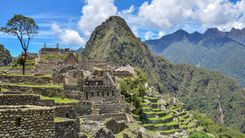Brief history
The region around Huancayo was dominated by the Huanca tribe from around 1200 AD, and the Huari culture before that, though it wasn’t until Pachacuti’s forces arrived in the fifteenth century that the Inca Empire took control. Occupied by the Spanish from 1537, Huancayo was formally founded in 1572 by Jeronimo de Silva, next to the older and these days relatively small town of Jauja. In 1824, the Battle of Junín was fought close to Huancayo, when patriotic revolutionaries overcame royalist and Spanish forces. Apart from the comings and goings of the Catholic Church, Huancayo remained little more than a staging point until the rail line arrived in 1909, transforming it slowly but surely during the twentieth century into a city whose economy was based on the export of agrarian foodstuffs and craft goods.
More so than any other Peruvian city – except perhaps Ayacucho – Huancayo was paralyzed in the years of terror during the 1980s and 1990s. As home to a major army base, it became the heart of operations in what was then a military emergency zone. In 1999, an extensive army operation captured the then leader of Sendero Luminoso, Oscar Ramírez Durand, who had taken over from Abimael Guzmán in 1992.



